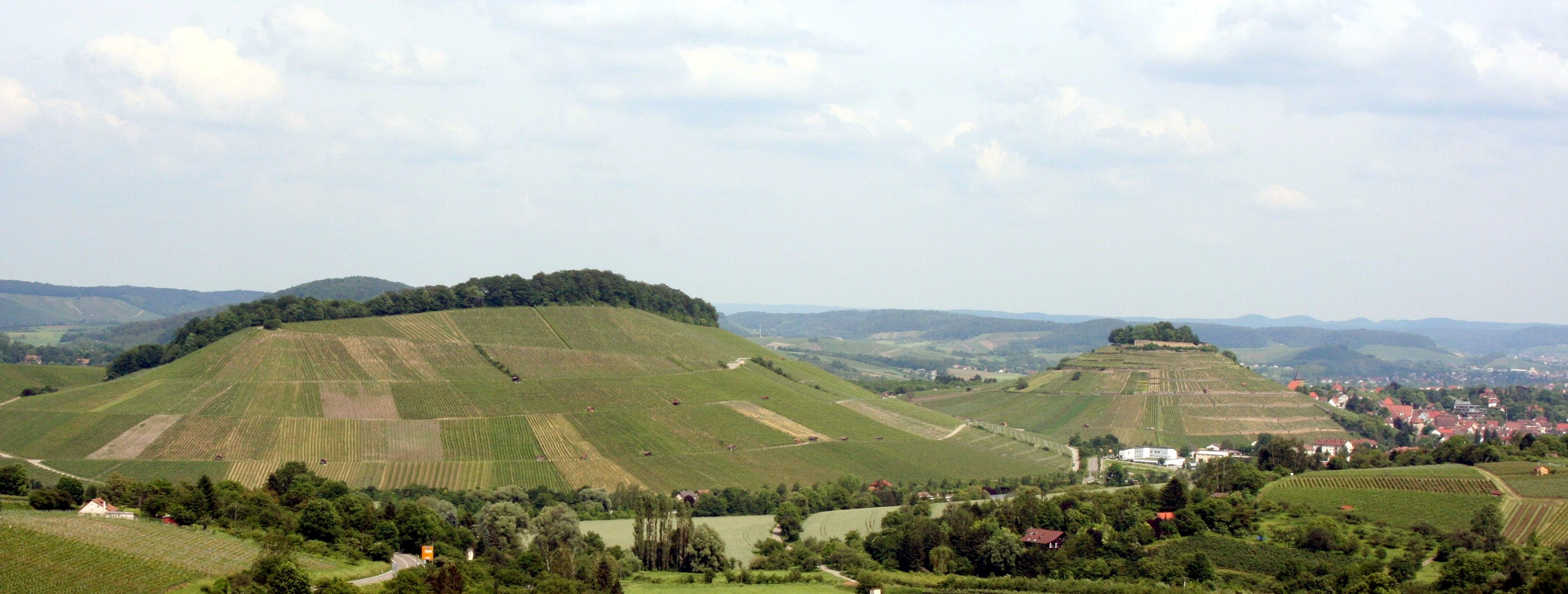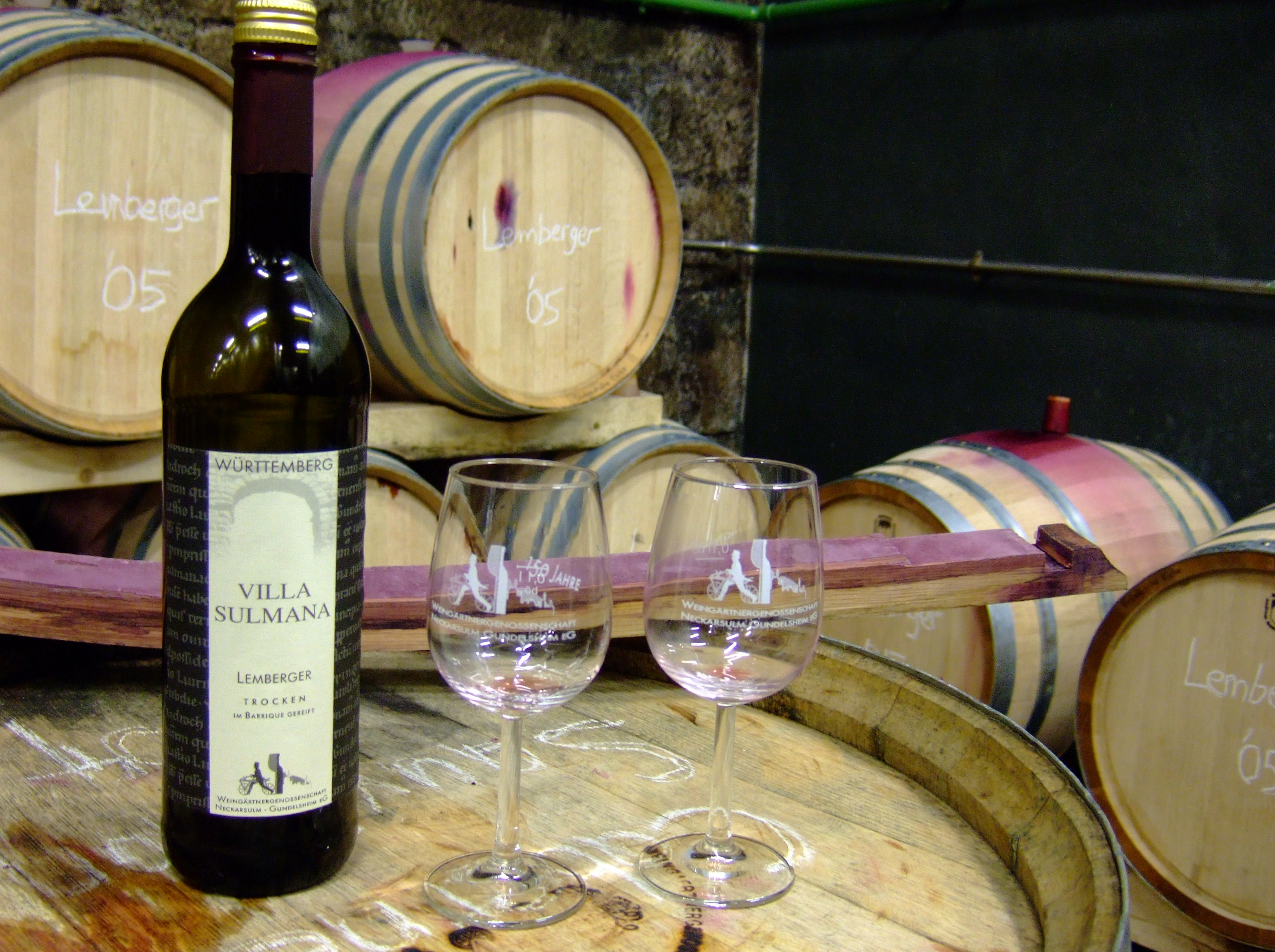Württemberg (wine Region) on:
[Wikipedia]
[Google]
[Amazon]
 Württemberg is a region (''Anbaugebiet'') for quality wine in Germany,Wein.de (German Agricultural Society): Wuerttemberg
Württemberg is a region (''Anbaugebiet'') for quality wine in Germany,Wein.de (German Agricultural Society): Wuerttemberg
read on January 1, 2008 and is located in the historical region of
Winemaking cooperatives are very common in Württemberg, number around 70, and are responsible for almost 75% of the region's production. Unlike most other German regions, Württemberg has a long history of producing red wines, although from somewhat different varieties than other German wine regions.
 Most of the Württemberg wine region is situated around the river
Most of the Württemberg wine region is situated around the river
 71% of the vines grown in Württemberg are of red grape varieties. The most common variety in Württemberg, and the region's signature grape, is the red wine grape
71% of the vines grown in Württemberg are of red grape varieties. The most common variety in Württemberg, and the region's signature grape, is the red wine grape
 Württemberg is a region (''Anbaugebiet'') for quality wine in Germany,Wein.de (German Agricultural Society): Wuerttemberg
Württemberg is a region (''Anbaugebiet'') for quality wine in Germany,Wein.de (German Agricultural Society): Wuerttembergread on January 1, 2008 and is located in the historical region of
Württemberg
Württemberg ( ; ) is a historical German territory roughly corresponding to the cultural and linguistic region of Swabia. The main town of the region is Stuttgart.
Together with Baden and Province of Hohenzollern, Hohenzollern, two other histo ...
in southwestern Germany
Germany, officially the Federal Republic of Germany, is a country in Central Europe. It lies between the Baltic Sea and the North Sea to the north and the Alps to the south. Its sixteen States of Germany, constituent states have a total popu ...
, which today forms part of the federal state of Baden-Württemberg
Baden-Württemberg ( ; ), commonly shortened to BW or BaWü, is a states of Germany, German state () in Southwest Germany, east of the Rhine, which forms the southern part of Germany's western border with France. With more than 11.07 million i ...
. Under German wine legislation, Württemberg and Baden
Baden (; ) is a historical territory in southern Germany. In earlier times it was considered to be on both sides of the Upper Rhine, but since the Napoleonic Wars, it has been considered only East of the Rhine.
History
The margraves of Ba ...
are separate wine regions.
With under vine in 2008, Württemberg is Germany's fourth largest wine region.German Wine Institute: German wine statistics 2009/2010Winemaking cooperatives are very common in Württemberg, number around 70, and are responsible for almost 75% of the region's production. Unlike most other German regions, Württemberg has a long history of producing red wines, although from somewhat different varieties than other German wine regions.
Geography
 Most of the Württemberg wine region is situated around the river
Most of the Württemberg wine region is situated around the river Neckar
The Neckar () is a river in Germany, mainly flowing through the southwestern States of Germany, state of Baden-Württemberg, with a short section through Hesse. The Neckar is a major right tributary of the Rhine. Rising in the Schwarzwald-Baar ...
and several of its tributaries, Rems, Enz, Kocher and Jagst. The geography of the wine region is dominated by these river valleys and include several south-facing slopes. The main part of Württemberg is situated between the cities of Stuttgart
Stuttgart (; ; Swabian German, Swabian: ; Alemannic German, Alemannic: ; Italian language, Italian: ; ) is the capital city, capital and List of cities in Baden-Württemberg by population, largest city of the States of Germany, German state of ...
and Heilbronn
Heilbronn () is a List of cities and towns in Germany, city in northern Baden-Württemberg, Germany, surrounded by Heilbronn (district), Heilbronn District.
From the late Middle Ages on, it developed into an important trading centre. At the begi ...
.J. Robinson (ed), ''"The Oxford Companion to Wine"'', Third Edition, p 776, Oxford University Press 2006, There are also vineyards on Lake Constance
Lake Constance (, ) refers to three bodies of water on the Rhine at the northern foot of the Alps: Upper Lake Constance (''Obersee''), Lower Lake Constance (''Untersee''), and a connecting stretch of the Rhine, called the Seerhein (). These ...
that belong to Württemberg.
Grape varieties
Trollinger
Trollinger, Schiava, or Vernatsch, is a red German/Italian wine grape variety that was likely first originally cultivated in the wine regions of South Tyrol and Trentino, but today is almost exclusively cultivated on steep, sunny locations in t ...
, which was planted on 21.2% of the vineyard surface in 2008. Trollinger gives red wines which are light in both colour and style (and occasionally made in a slightly sweet style) and Württemberg accounts for over 98% of plantings of Trollinger in Germany. Other common red varieties are Schwarzriesling (Pinot Meunier
Pinot Meunier (), also known as Meunier or Schwarzriesling (), is a variety of red wine grape most noted for being one of the three main varieties used in the production of Champagne (the other two are the red variety Pinot noir and the white ...
, which despite its German name is not related to "genuine" Riesling) at 15.1%,
Lemberger (same as Austria's Blaufränkisch
Blaufränkisch (; German language, German for ''blue Frankish grapes, Frankish'') is a dark-skinned list of grape varieties, variety of grape used for red wine. and California wine, California,
DNA profiling has shown that Blaufränkisch is a c ...
) at 13.9% and Spätburgunder
Pinot noir (), also known as Pinot nero, is a red-wine grape variety of the species ''Vitis vinifera''. The name also refers to wines created predominantly from Pinot noir grapes. The name is derived from the French words for ''pine'' and ' ...
(Pinot noir
Pinot noir (), also known as Pinot nero, is a red-wine grape variety of the species ''Vitis vinifera''. The name also refers to wines created predominantly from Pinot noir grapes. The name is derived from the French language, French words fo ...
) at 11.1%. The most common white variety is Riesling
Riesling ( , ) is a white grape variety that originated in the Rhine region. Riesling is an aromatic grape variety displaying flowery, almost perfumed, aromas as well as high acidity. It is used to make dry, semi-sweet, sweet, and sparkling ...
(18.1%).
References
{{DEFAULTSORT:Wurttemberg (Wine Region)Wine
Wine is an alcoholic drink made from Fermentation in winemaking, fermented fruit. Yeast in winemaking, Yeast consumes the sugar in the fruit and converts it to ethanol and carbon dioxide, releasing heat in the process. Wine is most often made f ...
Wine regions of Germany